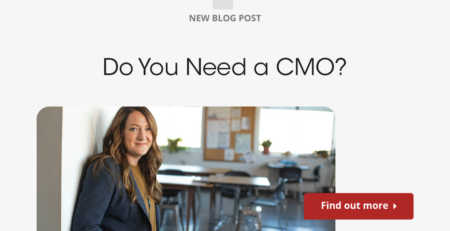Color Your Team: Recruiting Tips for Talented Colorists
In the vibrant world of design, colorists play a pivotal role, bringing visuals to life with their deep understanding of color theory and creative applications. Recruiting talented colorists can significantly elevate the quality of your creative projects, enhancing brand aesthetics and audience engagement. This comprehensive guide explores effective strategies and insights to help you attract and hire top-tier colorists for your team.
Understanding the unique skills of a colorist is the first step in recruiting the right talent. Colorists are not just artists; they are technical experts who understand the nuances of color science. Their work influences how a product is perceived and can be pivotal in a brand’s success. Therefore, recognizing the blend of creativity and technical proficiency in potential candidates is crucial.
Developing a clear and attractive job description is essential. It should highlight the specific skills and experiences required, such as proficiency in color grading software, an excellent eye for color, and experience in industry-standard tools. Additionally, outlining the role’s impact on your projects and company can attract candidates who are aligned with your mission and values.
Utilizing various recruitment channels can broaden your search. Traditional job postings, industry-specific forums, and social media platforms like LinkedIn can be effective. Moreover, tapping into networks at art and design schools can connect you with emerging talent who are eager to prove their capabilities.
Offering competitive compensation is non-negotiable. To ensure your offers are attractive, stay informed about industry standards for colorist roles. Resources like How to Know if Your Salary is Competitive can provide valuable insights.
During the interview process, practical assessments can provide deep insights into a candidate’s skill level and creative process. Asking candidates to perform a color grading task or to critique a color palette in real-time can reveal their expertise and decision-making process.
Investing in the continuous development of your colorists is also a key factor in not only attracting but retaining top talent. Offering opportunities for professional growth, such as workshops, courses, and attendance at industry conferences, can be very appealing to prospective employees.
Building a culture that values creativity and open communication can also make your team more attractive to high-caliber colorists. Encouraging feedback and fostering a collaborative environment can lead to more innovative and effective color solutions.
For remote or freelance colorists, understanding and implementing effective remote management practices is essential. Resources like Tips for Managing a Remote Work Force can help you adapt your management strategies to support a distributed team effectively.
Finally, leveraging staffing agencies specialized in creative roles can streamline the recruitment process. They can help identify candidates who not only have the right skills but also fit well with your company’s culture. For more on this, consider reading Using a Staffing Agency.
The essential skills to look for in a talented colorist
Identifying the right blend of skills in a colorist is crucial for their success in any creative project. Firstly, a deep understanding of color theory is fundamental. This includes knowledge of how colors interact, the emotional impacts of colors, and how colors influence user behavior. Technical proficiency in color grading tools like Adobe Photoshop, DaVinci Resolve, or similar software is also critical.
Attention to detail cannot be overstated. Colorists must discern slight variations in color that many might overlook. This skill ensures that the final product remains consistent and true to the creative vision. Creativity is another essential skill; it allows colorists to experiment and innovate with color schemes that enhance the overall composition of the project.
Communication skills are also vital. Colorists must effectively communicate their vision and choices to other team members, ensuring alignment with the project’s goals. Time management skills are necessary to handle multiple projects efficiently and meet deadlines without compromising the quality of work.
Problem-solving skills are equally important, as colorists often need to adjust their approach based on feedback or evolving requirements of a project. Adaptability in learning and using new tools and technologies can keep a colorist relevant in the ever-evolving landscape of digital design.
Lastly, a passion for continual learning is beneficial as the field of color technology is constantly advancing. Encouraging this trait can lead to innovative ideas and techniques that propel your projects forward. For more insights into fostering a learning environment, How to Become an Effective Remote Manager can offer some guidance.
How can I effectively assess a colorist’s technical abilities during an interview?
Assessing a colorist’s technical abilities requires a well-structured interview process that includes both questions and practical assessments. Start by asking detailed questions about their experience with specific tools and projects that showcase their expertise in color grading. Inquire about the challenges they have faced and how they have overcome them, which can provide insight into their problem-solving skills.
Implementing a practical test is highly effective. Provide a raw image or video clip and ask the candidate to perform a color correction or grading task. This will give you a direct observation of their technical skills and their approach to a task. Additionally, discussing the reasons behind their color choices during this test can reveal their depth of understanding and creativity.
It’s also beneficial to review their portfolio in detail. Ask them to walk you through their portfolio, explaining the thought process behind each piece. This discussion can highlight their technical proficiency, creativity, and ability to execute a vision consistently.
Consider using peer review as part of the assessment. Having a current team member review the work done during the practical test can provide a second opinion on the technical skills and fit within the team’s working style. For more tips on conducting effective interviews, Interview Red Flags offers valuable insights.
Lastly, always check references. Previous employers or clients can provide insights into the candidate’s work ethic, technical ability, and ability to collaborate on projects. This step should not be overlooked as it confirms the practical skills and experiences shared by the candidate during the interview.
What are the best platforms to recruit colorists?
Finding the right platforms to recruit talented colorists is crucial for reaching the best candidates. Professional networks like LinkedIn are invaluable for their wide reach and networking capabilities. LinkedIn allows you to post job ads, search for candidates with specific skills, and even directly reach out to potential candidates.
Industry-specific job boards such as Behance and Dribbble are also highly effective. These platforms are frequented by professionals in the creative fields, making them ideal for finding skilled colorists. Posting detailed job descriptions here can attract candidates who are passionate about color work and actively seeking new opportunities.
Engaging in social media platforms, especially those popular among artists and creatives, such as Instagram, can also be beneficial. Many colorists showcase their work on these platforms, providing a direct insight into their style and quality. Direct messaging on these platforms can serve as an informal first step in the recruitment process.
Participating in industry conferences and workshops can also be a fruitful recruitment strategy. These events allow you to meet potential candidates in person and see their work in action, often in workshops or live demonstrations.
Referrals from current employees or industry contacts can also lead to great hires. People tend to refer candidates whom they believe to be reliable and skilled, which can save time in the initial screening process. To encourage referrals, consider setting up a referral program with incentives for successful hires.
For more specialized roles, consider using a creative staffing agency that focuses on creative roles. They can help you navigate the recruitment process efficiently and find candidates who not only have the right skills but also fit well within your company’s culture. For more on this, consider reading How to Choose the Best Staffing Company.
How do I create a compelling job description for a colorist?
Crafting a compelling job description for a colorist involves several key elements. Start with a clear job title that accurately reflects the role. Use a title that is recognizable and searchable, such as “Senior Colorist” or “Color Specialist.”
Begin the job description with a brief overview of your company, emphasizing your company’s vision, culture, and what makes it a unique place to work. This helps potential candidates understand the kind of environment they might be entering.
Detail the specific responsibilities of the colorist in your company. Be clear about what their day-to-day tasks will include and how their role affects larger projects. This clarity helps candidates assess whether their skills and interests align with the job.
Outline the technical skills and software proficiencies required. Specify which color grading tools and techniques they should be familiar with. Also, mention any secondary skills that could benefit the role, such as experience with animation or video production.
Include a section on the personal attributes you value in a team member. Skills like creativity, attention to detail, and a proactive attitude can be just as important as technical abilities.
Discuss the career development opportunities available within your company. Talented professionals are often looking for roles that offer growth and learning opportunities. Detailing these can make the position more attractive.
Be transparent about the salary range and benefits. This transparency helps to manage expectations and attract candidates who are comfortable with the compensation you’re offering.
Encourage candidates to submit a portfolio along with their application. This is particularly important for a colorist, as a portfolio will provide a direct insight into their style and quality of work.
End the job description with a call to action. Encourage interested candidates to apply and provide clear instructions on how to do so. Make sure the application process is as straightforward as possible to avoid deterring potential candidates.
For more tips on creating effective job descriptions, Creating a Marketing Team offers additional insights that can be adapted for creative roles.
What strategies can help retain top colorist talent in a competitive market?
Retaining top colorist talent requires a strategic approach focused on both professional and personal growth opportunities. Start by offering competitive salaries and benefits. Regular salary reviews and adjustments based on market standards can help keep your compensation packages attractive.
Invest in continuous education and professional development. Providing access to the latest courses, workshops, and conferences related to color theory and digital art can help colorists stay ahead in their field and feel valued by the company.
Create a supportive and collaborative work environment. Encourage open communication and regular feedback, allowing colorists to feel connected and integral to the team’s success. Recognizing their efforts and achievements, both publicly and privately, can also boost morale and loyalty.
Offer career advancement opportunities within the company. Clear pathways for progression and the chance to lead projects or mentor others can be very motivating for ambitious professionals.
Consider flexible working arrangements. Allowing for remote work or flexible hours can help maintain a healthy work-life balance, making your company a more attractive place to work.
Engage colorists in decision-making processes, especially those that affect their work directly. This inclusion can increase their investment in the company and its projects.
Regularly review and update the tools and technologies used by your team. Providing state-of-the-art tools for color grading and design can enhance work efficiency and job satisfaction.
Encourage a culture of innovation where new ideas and experimentation are welcomed. This can be particularly appealing to creative professionals like colorists, who thrive in dynamic and innovative environments.
Implement team-building activities that are not only fun but also enhance team cohesion and collaboration. A strong team dynamic can improve job satisfaction and retention.
For more insights on employee retention strategies, 10 Ways to Recognize Employees provides useful tips that can be adapted to creative teams.
How important is a colorist’s portfolio, and what should it include?
A colorist’s portfolio is a critical tool in their professional arsenal, showcasing their skills, style, and range of abilities. It is often the first thing potential employers or clients look at, making it an essential element of their career development.
The portfolio should include a variety of projects that showcase the colorist’s ability to work with different styles and media. Include before and after examples to highlight the impact of their work. This can demonstrate their ability to enhance a project’s aesthetic and meet client expectations.
Each project in the portfolio should have a brief description that explains the objectives, the challenges faced, and how they were overcome. This narrative can give context to the visuals and show the colorist’s problem-solving skills.
It’s also beneficial to include testimonials from previous clients or collaborators. Positive feedback can enhance the credibility of their work and give potential employers an insight into their working relationships.
Ensure that the portfolio is well-organized and easy to navigate. A digital portfolio that is accessible online can be particularly effective, allowing potential employers to easily view their work from anywhere.
Keep the portfolio updated with the latest projects and achievements. Regular updates not only show ongoing commitment to their craft but also keep the portfolio relevant and engaging.
Consider including a personal statement that reflects the colorist’s artistic philosophy and career goals. This can help potential employers understand their passion and whether they are a good fit for the company’s culture.
Technical details about the tools and software used in the projects can also be included. This information can be valuable to potential employers who are looking for candidates with specific technical skills.
For those looking to expand their reach, participating in portfolio review sessions at industry events can provide valuable feedback and increase visibility among potential employers.
For more tips on creating an effective portfolio, 10 Common UI/UX Myths Debunked and the Truth Behind Them offers insights that can be adapted for colorists.

Can offering remote work options help in recruiting top colorists?
Offering remote work options can significantly enhance your ability to recruit top colorists by broadening the talent pool beyond geographical limitations. This flexibility can be particularly attractive to highly skilled professionals who may not be local or are seeking better work-life balance.
Remote work options can also lead to increased productivity and job satisfaction, as employees are often more comfortable and less stressed in their home environments. However, it’s crucial to ensure that remote colorists have access to the necessary tools and technologies to perform their work effectively.
Implementing robust communication tools and regular check-ins can help maintain team cohesion and ensure that remote colorists feel connected and valued. It’s also important to establish clear expectations and accountability measures to ensure that work is completed to a high standard.
Offering remote work can also reduce overhead costs for your company, such as office space and utilities, which can be redirected towards other resources or benefits for employees.
However, it’s important to consider the potential challenges associated with remote work, such as isolation and communication barriers. Providing support for mental health and ensuring a healthy work-life balance is crucial.
For more information on managing remote teams effectively, How to Become an Effective Remote Manager offers valuable strategies and tips.
In conclusion, while remote work options can offer many benefits in recruiting top colorists, it requires careful planning and management to ensure that it contributes positively to both employee satisfaction and company objectives.
Conclusion
In the competitive field of digital and visual design, recruiting and retaining talented colorists is crucial for the success of creative projects. By understanding the essential skills required, effectively assessing candidates, and utilizing the right platforms for recruitment, companies can enhance their teams with professionals who bring both technical expertise and creative vision.
Creating compelling job descriptions and offering competitive benefits are key to attracting top talent. Additionally, fostering a supportive work environment and providing opportunities for professional growth can help retain skilled colorists in a competitive market.
Considering the increasing acceptance of remote work, companies should also explore flexible working arrangements to tap into a broader talent pool. This approach not only expands the options for recruitment but also contributes to a more diverse and versatile team.
Ultimately, the success of recruiting efforts in the creative industry hinges on a strategic and thoughtful approach. Companies must be proactive in adapting to industry trends and evolving their recruitment strategies accordingly. By prioritizing the development of a strong employer brand that values creativity, innovation, and continuous learning, businesses can attract and retain the best colorist talent available.
Moreover, leveraging technology and social media for recruitment can enhance visibility and reach a wider, more diverse audience of potential candidates. Engaging content that showcases the company’s projects, work culture, and success stories can attract passionate colorists who are looking for dynamic and inspiring environments.
It is also essential for companies to maintain a high level of engagement with potential candidates throughout the recruitment process. This includes timely communication, feedback after interviews, and a transparent hiring process. Such practices help build trust and respect with candidates, which are crucial for long-term relationships.
Additionally, companies should consider the integration of data-driven recruitment strategies. Analyzing data from past recruitment efforts can provide insights into the most effective sources and methods for attracting top talent. This approach allows companies to optimize their recruitment strategies, reduce hiring costs, and improve the quality of hires.
Finally, it is vital for businesses to stay compliant with employment laws and ethical standards in recruitment. This not only protects the company from legal issues but also promotes a fair and equitable hiring process that respects the rights and dignity of all candidates.
In conclusion, the recruitment of talented colorists requires a multifaceted approach that combines a deep understanding of the creative industry with strategic recruitment practices. By fostering an environment that values creativity, embracing flexible work arrangements, and utilizing modern recruitment technologies, companies can build a team of skilled colorists who will drive their creative projects to new heights.
For further insights into effective recruitment strategies, consider exploring Recruitment Marketing for more detailed information and tips.
In today’s competitive market, finding the right creative and marketing expert can be a challenge. But with icreatives, you’re in experienced hands. With 37 years in staffing and a track record of matching more than 10,000 employees to over 1,000 companies worldwide, we know how to connect you with the best. Plus, you only pay if you hire—there’s no risk, only results.
Ready to find your perfect creative or marketing expert? HIRE WITH ICREATIVES today!












